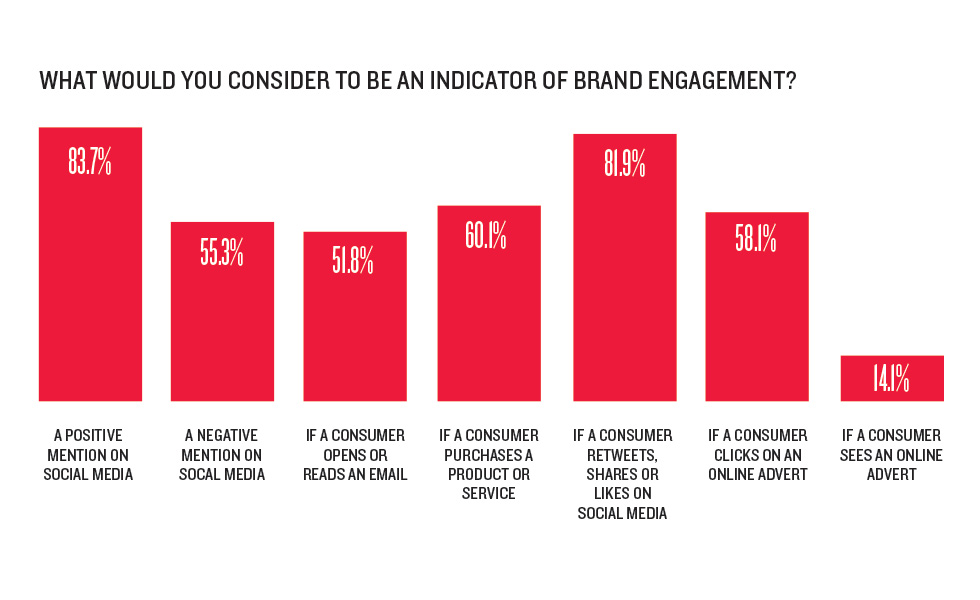The Big Transition: What to Do with Your Brand Following a Merger or Acquisition
Whether your company is in the throes of a merger, acquisition or a corporate restructuring, how your brand presents itself through the transition could make a big impact on both customers and employees.
We all know change is hard. Consider that many of your employees may identify with where they are today, and need to be brought on the journey to understand both why it is happening and what the change means for them. And your customers similarly need to know why your change is going to improve their outcome, or why else would you subject them to it and risk losing their business?
Far too often a brand strategy is overlooked in the M&A process, or brought to the table too late to have an impact in anything except final implementation. Whenever it happens, it is important to develop a communication plan that addresses both internal and external audiences. This plan should break down the individual audiences in detail and outline what they should know and when, including the appropriate verbal and visual brand implementation for each instance.
Verbal brand communication encompasses not just what the (new) name is but the vision and positioning (or the reason behind the brand change). Change of this scale can create a moment in time when all eyes are upon you, therefore providing a great opportunity to tell your brand story.
Often this workload is shouldered by a brand manager who is also juggling other full-time responsibilities. An agency or contract resource can help keep your plan on track and address new challenges as they surface, and they most always do.
 You can’t expect to already have the answer for every potential situation where your brand may show up, but strong principles and a good Q&A document can sure help with decision making. Another approach is to build a brand council, or a team of ambassadors across functions within your company that can help with the brand roll out.
You can’t expect to already have the answer for every potential situation where your brand may show up, but strong principles and a good Q&A document can sure help with decision making. Another approach is to build a brand council, or a team of ambassadors across functions within your company that can help with the brand roll out.
Finally, how do you know if the transition has been a success? If you already have brand tracking in place, you can evaluate and make incremental changes as needed to see where you are having impact. Without existing benchmarks however, you will need to determine what metrics are the focus of your new brand and the goals you are working to reach.
Don’t expect brand change to happen overnight. Though you my launch or reveal a change quickly, brand perceptions can be deeply embedded in customer’s minds and take years to evolve.
Has your company recently experienced change or growth? Due to changes in business strategies, acquisitions, internal organizational changes or the addition of new products to a portfolio, your brand strategy may need to evolve over time. Click here to download your free copy of "Your Brand's Guide to Corporate Change" today, and learn how to align your brand and business strategy for success!
How to Use Brand Positioning to Start your Brand Development
Today we are excited to have a guest blog from Lisa Overman, Director, Brand Strategy!
As a seasoned branding and marketing pro, I have been developing positioning statements for brands and companies for longer than I care to admit. Though if asked, I honestly could not have told you how “positioning statements” came to be so well-known and one of the most important marketing tools used today; that is until I read the article by Rance Crain, How Al Ries Positioned the Positioning Statement.
 Remember your high school pep rallies and games? The excitement of the competition, the players focused on the win and the fans uniting behind the team to cheer them to victory. That is what a positioning statement - it is a company’s mantra, rally chant, cheer to gather the teams and get everyone fired up. In short, it is the chance for a brand to shout to the world that it is the best in the business. Every brand, business owner, brand developer and marketer wants to have a positioning statement that serves this purpose, in addition to uniting all of the teams that support the brand behind a common goal.
Remember your high school pep rallies and games? The excitement of the competition, the players focused on the win and the fans uniting behind the team to cheer them to victory. That is what a positioning statement - it is a company’s mantra, rally chant, cheer to gather the teams and get everyone fired up. In short, it is the chance for a brand to shout to the world that it is the best in the business. Every brand, business owner, brand developer and marketer wants to have a positioning statement that serves this purpose, in addition to uniting all of the teams that support the brand behind a common goal.
Ries alludes to companies needing an aligned-team approach when he describes the differences between the creative team and the marketing team, and who owns the foundation of kicking off that next big idea. Internally, your team has to be rowing in the same direction with consensus agreement that this is the best direction for the brand. If you can’t rally a sense of belief from your own team, how can you expect consumers to do the same?
That is why creating a strong positioning statement is such an important starting point. It will lay out some of the key aspects of the brand building process, pointing out the end goal, the basic characteristics or big idea, and some of the steps to get the brand to the top.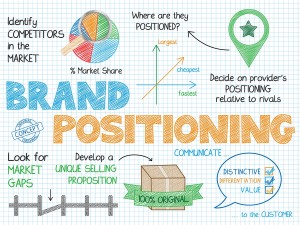
So how does a positioning statement come to fruition? Ries provides a great example when discussing working with Uniroyal on their first pass at a positioning statement. In his example, he discusses how the team made the unified choice to position the brand as the “technology leader in the rubber industry.” He then points out how the brand needed to convince the consumer of the validity of this statement, answering questions such as how does Uniroyal back up its claim as the leader in the space and how is leadership measured, while imploring the team to provide concrete reasoning to support the statement.
The goal of what Ries was doing was to let the Uniroyal brand team know that on its own, the statement wasn’t strong enough or believable enough to be the “rock” of the brand.. The concept was there, but it needed something credible, unique and stronger than what every other competitor was saying. Using facts to support their next positioning statement, Uniroyal showed their differentiation and outlined how they stood apart from the competition: “Uniroyal holds more patents than any other rubber company.” Simple, concise and clear, and allowing for the consumer to connect the dots between their “best of” statement and their leadership claim.
So the next time you are searching for that perfect, solid positioning statement and feel like you are hitting your head on a rock, focus on finding the words and statements that sum up that big idea. Then, explain what that big idea has to offer and what makes it different from the competition. In doing so, you can ensure that your positioning statement is the cornerstone for your next big idea that turns into your brand, and then ultimately become the center for all your sales and marketing efforts.
Image Sources:
Image 1
Image 2
Function or Feeling - How Will You Position Your Brand?
Nobody wants a directionless brand. Wandering through the consumer world, aimlessly latching on to the newest flavor of the month trend, hoping to find where it truly belongs.
Successful brands have purpose. They have pre-determined areas of differentiation and a target audience. They have a brand position. With this sense of direction, they can focus their branding efforts in the same direction, allowing for the full effectiveness to shine through.
So we now understand that your brand needs a position. The next question is – what is that position going to look like? When creating your positioning strategy, there are two main aspects to use as starting points – function or feeling. But which one’s right for your brand?
FUNCTION:
These brands are built on the foundation of their product or service. With the goal of owning their competitive space, the brand elements all tie back to the points of differentiation between them and the competition.
For instance, Under Armour has built its brand on the strength of its product, specifically its unique athletic wear characteristics. It came into the market touting a product that was unprecedented in the athletic wear space, and Under Armour has taken that advantage as the centerpiece of its brand. Even as it has expanded into other product lines, the brand continues to harken back to itself as a solution to common athletic-related problems across the board.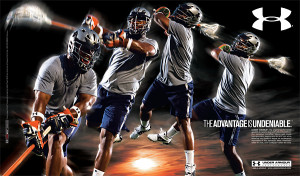
In taking this course of action, a brand must plan not only for today, but for the future. Will your coming products and/or services be able to live up to the standard set by the brand? It’s not enough to have one revolutionary piece to the puzzle, but to position yourself as a functional brand, subsequent pieces much fit much the same way.
This is welcome news to brands that thrive in innovation. Under Armour, Apple, Google – these brands strive to be known for their breakthroughs, and have lived up to the challenge consistently, and as such they have built their brands around this fact. They want their brand to stand out as the leaders in creating products that provide solutions and outstanding experiences for their consumers, time and time again.
FEELING:
Connection. Happiness. Satisfaction. The brands who position themselves through feeling are searching for the necessary alignment with these reactions by their consumers. Their goal is to go beyond that initial interaction an establish an emotional connection that drives brand loyalty and builds brand equity.
Some of these feelings are reactionary, and some are aspirational. Reactionary-focused brands will look to highlight the immediate feeling or emotional response that comes with brand interaction. Whether it is a beverage brand touting its great taste or a food brand highlighting its healthiness, how the consumer reacts (or hopefully reacts) is the centerpiece of the branding efforts.
Aspirational brands want to shape how the consumer feels, creating and driving home their intended emotional connotations. Luxury brands often lead the way in aspirational feeling branding, positioning themselves as the source of consumer pride – elegant, wealthy, high-class, etc. Their goal is to be the brand that makes the consumer hope to achieve some sort of unattained goal or feeling.
Image Sources
Image 1
Image 2
Header Image
Brand Loyalty - How Easy is it to Achieve?
We all value loyalty – it’s one of the main reasons people get dogs as pets. It’s also why brand loyalty is such a prized accomplishment when brand building.
When a brand achieves brand loyalty, it successfully builds a base of consumers who return, time and time again, to the same brand whenever they are looking for that product or service.
For many brands, however, loyalty as a goal is viewed as a far-off and low-probability achievement, something “that would be nice one day” or “we’d love to get to that place” and filed away as low priority due to its seemingly bumpy road to the finish line.
Why is this so often the case? Why do brands dismiss or doubt their ability to craft a brand that connects with their target audience in such a way? Those brands who have achieved the highest level of consumer loyalty are revered to a point where they are looked at more as myths than relatable situations. Framed as shooting stars within the branding world, these brands are disconnected by many observers from the path they took to reach that point. The struggles, the work, the behind-the-scenes brand development are forgotten by outsiders, and instead the story of overnight success comes to the top, which, for any brand builder, is a definite fantasy.
But fear not, brand creators. Achieving brand loyalty can be done. The first step is to believe that it can be done, and be done with the brand you will have – take the aforementioned reasons for dismissing and take them out of the equation. That is the first step, and the most important.
Once you have checked the box on believing in the brand, the next step is to incorporate this mindset into the brand building.
There are two main options to which a achieve brand loyalty – both of which start at the same place: choosing a distinct end point for the brand. That is, at the end of the day, decide where you want your brand to live in the minds of your consumers.
The first destination is to become the leading brand in your space. Determine the niche where your brand will live, and position it as the premier option. Consumers place high value in quality, and if they find a brand that they feel will give them not only the best experience, but also the sense of peace in consistently top quality, it will immediately jump to the top of the list. Being the leader doesn’t mean just having the best product, it also can be viewed from a customer experience standpoint – in fact, providing a best-in-class customer experience should be at the top of the list for brands. Not only can it elevate your retention and loyalty chances, but it can also bleed over and be a vital aspect of the next option to brand loyalty achievement.
Although harder to quantify, this option is one that will provide the most loyal of brand loyalists - set out with the goal of creating and securing a deep, emotional connection with your audience. These consumers will ride with the brand through the ups and the downs, and will be the most willing to give the benefit of the doubt when negative events occur. These brands make consumers feel a certain way – in addition to satisfaction with the product or service itself, this emotional connection resonates outside of the direct interaction.
Brands can be given a level of loyalty by consumers, where they can rest easy knowing their core base is secure. First, they must believe in the brand and its potential – then, they should set out to build a brand that stands out in the minds of its audience.
Achieving #brand loyalty can be done. The 1st step is to believe that it can be done, & with the brand you will have https://t.co/8rfEMzeDzD pic.twitter.com/R4M9EbLroc
— Addison Whitney (@AddisonWhitney) September 19, 2016
How to Attach Your Brand to Moments in Consumers' Lives
A recent Adweek article discussed how brands are using non-traditional marketing and advertising strategies to target students going back to school, especially those in college.
One key takeaway from the article is how these brands are using their advertising efforts in part to align themselves with specific moments within a student’s time at college. As seen in the image below, such brands as Tide are looking to become the brand connection with moments like the first time a student does their laundry.
 There have been many words written and discussed about the importance of emotional connection in branding, where brands set forth a goal to establish an emotional bond with a consumer over time. But these brands are going even bigger, looking to not only fill the space with a consumer in the moment, but also needing to create the inclination to connect a brand to that moment.
There have been many words written and discussed about the importance of emotional connection in branding, where brands set forth a goal to establish an emotional bond with a consumer over time. But these brands are going even bigger, looking to not only fill the space with a consumer in the moment, but also needing to create the inclination to connect a brand to that moment.
Most consumers don’t naturally have a specific brand in mind when they are performing normal, everyday tasks. You need to load the dishwasher? Your mindset is normally more on the task itself than what brand dishwasher soap you will need to buy.
This is where moment branding does the heavy lifting.
As previously mentioned, the first goal of successful moment branding is to establish the brand connection. Make your brand THE first thought of an individual in the moment, surpassing the general, task-focused mindset that naturally exists. For instance, the “defining moments” image connects “signing first lease” with Citi. For the majority of first-time home owners, their mind is full of thoughts of down payments, mortgage fees, interest rates, etc. In other words, far from thinking of what brand they can leverage.
By positioning themselves as the expert/top brand in the space, Citi can move themselves up the mindset pecking order, grabbing a portion of the thought process, and in turn raising the profile of their overall brand.
A level of emotional connection cannot be ignored, however. This is the bridge from moment to brand. It’s not enough to simply associate yourself with a task such as laundry, but you must become that moment’s iconic brand. Settling for second place only ensures that your competition will reap the benefits of the moment. It takes work to make the moment brand-worthy, there isn’t enough available to hope that the consumer considers all of the brand options.
We all remember our first time cooking in the dorms, and at the same time, can remember what our first requirement for deciding what to cook – ease. College students with limited culinary skills and equipment are less concerned with the intricacies of cooking; they want something easy and fast. Kraft, in their moment branding efforts, saw this as an opportunity to connect. Their “Easy Mac” and other dorm-friendly options were situated ideally for the audience and the moment. Therefore, Kraft positioned these brands as the go-to for college chefs.
Done successfully, moment branding can have long-lasting and wide-ranging impacts on a brand and on consumer mindsets. Our lives are full of both significant and mundane moments, each of which possesses the potential for brand connection. Once we begin associating specific brands with each moment, these brands will have one less person to try and market to, as they have become synonymous with our lives.
Learn more about building your best brand portfolio strategy by downloading this FREE webinar, "Identifying The Opportunities In Your Brand Portfolio - Are You Capitalizing On Every Potential Business Opportunity Your Portfolio Provides?"
Patience is a (Branding) Virtue
“He that can have patience can have what he will.”
While many don’t consider Benjamin Franklin, the source of this quote, to be a master in branding and brand strategy, but the inventor of bifocals touched on a very important brand lesson when he spoke these words.
Simply put, brand development is a practice in patience and the ability to stay the course. When creating a brand, especially during the strategic development phase, the end goal may seem a million miles away. Along those lines, there may be some bumps in the road on the way to success, which will undoubtedly cause some to begin wondering if and when the strategy should be abandoned.
That time should be the last thing on the mind of those working on the brand’s development, as they should instead be focused on staying the course, allowing the brand time to build and grow into the final draft that everyone is working toward.
And while it is marked with very specific, brand-boosting moments such as logo reveals and brand name launches, it is important to not get sucked in to the mindset that these momentary brand bumps are a long-lasting sign that the brand has reached is pinnacle.
In a recent article, Fred Moore touched on this very topic, discussing how, despite the normal expectation of short-term success, establishing a strong brand isn’t a quick fix:
“I tell clients that based on my experience, it takes about three years for a brand to become vested in the minds of the customer,” he says. “Clients tend to feel pressured to produce more short-term results. It is your job to keep the client ‘on strategy’ for the sake of their brand.”
Moore’s mention of consumer mindset is a key point in why brand patience is crucial. The marketplace is filled with similar brands to yours, and as such, it can be easy for consumers to blend them all together or get confused to which brand is which – at least at first. For those brands that have a solid foundation in place and have successfully created a brand that differentiates itself form the competition, finding a space in the consumer consciousness will be achieved quicker, albeit still not right away.
Touching on Franklin’s quote one more time, we see that he ends it with “can have what he will.” In other (branding) words, patience also allows for a brand development that shoots even higher than a short-term-focused brand. if you are in the mindset that time is your friend , not enemy, your brand will have more time to really expand its definition of success.
So when starting to develop a brand, be sure to always keep one eye toward the future, as that is where you will find true brand success.
Learn more about building your best brand portfolio strategy by downloading this FREE webinar, "Identifying The Opportunities In Your Brand Portfolio - Are You Capitalizing On Every Potential Business Opportunity Your Portfolio Provides?"
Brand Engagement in an Ever-Connected Marketplace
 In the not-so-distant past, brand engagement was, like most media and advertising efforts, easily calculated, tracked and controlled. Advertisements were seen for a specific time frame by a set number of consumers, products were featured through in-person demonstrations in stores and malls, where the brands themselves drove the interaction and could control when and how they were perceived.
In the not-so-distant past, brand engagement was, like most media and advertising efforts, easily calculated, tracked and controlled. Advertisements were seen for a specific time frame by a set number of consumers, products were featured through in-person demonstrations in stores and malls, where the brands themselves drove the interaction and could control when and how they were perceived.
This is no longer the case. Today, brands are faced with both the ease and the issues that come with online brand engagement opportunities, where measurement is tracked via software programs and engagement rates are dependent on the consumer.
Marketing Week recently released the results of a survey on how companies indicate brand engagement. The results are telling – all seven of the top results are tied back into online and social media marketing, where the engagement is indicated by an action taken on the part of the consumer.
Not only does this indicate a shift in the power structure for brand engagement, but it also shows how frequent these engagements can take place. Social media mentions don’t follow a schedule – they can occur 24/7/365, just like email opens and online advertisement clicks. Additionally, the multi-faceted engagement opportunities provide for one consumer to engage a brand through multiple channels within a short time frame.
One of the main benefits of this constant connectivity resides with those looking to improve their brand sentiment. Brand engagement is often the fastest way to change perception about a brand, especially with individual users. Therefore, in a day and age when these same users have the opportunity for countless brand engagements online in a brief amount of time, therein lies the opportunity to turn negative sentiment into positive quickly through on-point and successful brand engagement strategies.
And yes, this same principle can have the opposite impact. Just as a brand can take a step forward in the brand perception department, so too can a brand take ten steps backward by virtue of a brand engagement misstep.
For brands, these changes result in a growing need for consistent brand performance, across all channels for an extended period of time. When the consumer controls the timing of engagements, the brands can’t let their guard down, allowing for an interaction to occur when they aren’t at their best. Whether this is an ill-advised social media post, a website issue, a less-than-perfect email campaign, or any other action that leaves the door open for negative engagement, brands who succeed in this area of their strategy are constantly vigilant in this area.
Learn more about building your best brand portfolio strategy by downloading this FREE webinar, "Identifying The Opportunities In Your Brand Portfolio - Are You Capitalizing On Every Potential Business Opportunity Your Portfolio Provides?"
3 Ways a Strong Brand Can Bring Your Organization Together
Not only can a strong company brand drive consumer and market success, but it can also have a positive impact from within the office walls. Whether it’s through initial brand development or a rebranding effort, the creation and implementation of a strong brand will have a unifying effect on the organization as a whole.
Although often overlooked, here are three ways a strong brand can serve to make your organization stronger and more successful:
- Unite behind a common goal
A strong overall brand should include the definition of what a brand stands for and their overall mission – what success means to them. For employees, the knowledge that their work and their role in the organization has a definite end goal and purpose will allow for a more unified and inspired workforce. Organizations thrive when everyone is following a similar path and know what success looks like, and this aspect of a strong brand gives the employees just that.
- Something to write home about
Never underestimate how pride can strengthen an organization. Pride in the product, pride in the people, and yes, pride in the brand. Whether it’s a logo is a visual gem, or a new brand name that encompasses perfectly what the organization represents, when an organization is made up of people who are proud of the brand and feel good about connecting themselves with that brand, the entire organization benefits. Keep this in mind when creating the entire brand, not just these elements. Employee feedback and input can be a valuable piece of the brand development process, providing insights into how potential brands would go over within the organization.
- Keeping a steady stream of friendly faces
It’s not enough to bring in outstanding talent to an organization – it’s also vital to keep those talented employees within the company for a long time. In today’s fast-paced employee world, where job changes are commonplace and longevity within one organization is becoming more rare, potential and current employees care about the organizational brand. The best of the best have a number of options available for their services, and often a choice comes down to the details – that’s right, such as a strong brand. Another benefit is the brand can be shown off and exhibited early on in the hiring process, from consistent email signatures to an office space that carries and shows off the brand.
Organizations face a multitude of attention-needing issues and problems each day, that take time and effort to work on. They are also tasked with keeping an eye on what’s coming next, to properly prepare the organization for future success. They need assistance in whatever area possible, and a strong brand can be the ticket for organizational unity and consistency, freeing up a crucial aspect of managing your company.
How to Ensure Smart Branding Evolution
If you’ve been walking almost anywhere outside the past few weeks, you’ve undoubtedly either seen or almost run into someone on a beeline trek with their head in their phone, searching for a nearby Pokémon character. The Pokémon Go craze is in full force – it’s everywhere you look in real life, and now is making its way into the business world. Brands are using the phenomenon in their marketing, advertising and product development decisions, hoping to ride the coattails to success.
But some brands are still standing on the sidelines and out of the fray. Their brands are uninfluenced by the latest sensation to grab the public’s attention. Instead, they are hoping to stand out by 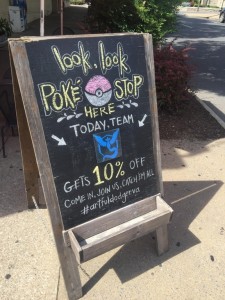 standing out – a strategy of being unique doing the very things that were commonplace a month ago.
standing out – a strategy of being unique doing the very things that were commonplace a month ago.
From a branding standpoint, there is a definite risk involved here. When brands don’t latch onto a trending topic or event, there are going to be those in the marketplace who will see this as being out of touch or having an inability to adapt. These brands will reap the benefits of those caught up in the mass hysteria, while turning their nose at the brands that aren’t playing the game.
However, one of the most sought-after brand characteristics is stability, and these brands are showing the have it. Staying true to themselves, trusting in their brand strength, staying the course in their brand persona – these are just a few of the nails they are hitting right on the head when it comes to building a strong brand.
Now, this isn’t to say that every new successful trend should be avoided at all costs by strong brands. There are some that come around that are perfect fits and should be capitalized upon. But the distinction lies in the fit – change for the sake of change and being “hip” just because everyone else is doing it is a one-way ticket to weakening your brand.
Being a strong brand isn’t synonymous with being rigid and unwilling to change; in fact, it should be flexible, providing room to shift and shape as time passes. It’s one of the hallmarks of long-lasting brands. The marketplace changes, consumers evolve, and those that survive evolve right along with them – to a point.
They know that there is a sweet spot in their brand landscape where they are best set up for success – their “home” full of ideal audience targeting, on-brand messaging and brand elements that fit ideally into their strategic direction.
For strong brands looking to evolve, defining “home” is crucial. Staying within themselves and not going outside of their brand’s comfort zone will allow for evolution without compromising the brand. By keeping this in mind, they can ensure their brand is up-to-date with the current market landscape while simultaneously allowing for it to stay strong and consistent.
So next time you see a brand advertising their connection with Pokémon Go right next to a brand who has chosen to stay out of the trend, take note of how their brand played into the decision, and whether they are staying “home” with their choices.
Image Sources:
Image 1
Image 2
Learn more about building your best brand portfolio strategy by downloading this FREE webinar, "Identifying The Opportunities In Your Brand Portfolio - Are You Capitalizing On Every Potential Business Opportunity Your Portfolio Provides?"
How to Build Your Brand Portfolio Using a Flagship Brand Strategy
"Strategically, Coke and Coke Zero Sugar are ham and egg. It's absolute dovetailing. I always use the analogy of tea: We either have it with our without sugar. It's Coke, with or without sugar,"
This quote, from Coca-Cola Great Britain marketing director Bobby Brittain in a recent announcement that starting this week in Great Britain, Coke Zero will be reformulated and rebranded as Coca-Cola Zero Sugar, highlights an interesting trend in brand portfolio strategy, where a classic, flagship brand becomes the comparison point to a number of secondary brands within the portfolio. With this strategy, the hope is that consumers will connect the two brands even more than before, boosting Coke Zero while also highlighting its differences from Coke.
When you have an iconic brand already in your portfolio, along the lines of what the Coca-Cola Company has with its namesake product, the decisions in regards to complementary brands can have a similar strategic direction.
The brand equity built up from these brands can be a beneficial foundation to stand on when building new complementary brands, especially if those share a commonality with the iconic brand, such as a similar name or logo.
Brittain highlighted the goal of this brand strategy shift and pointed out that using Coke as the standard-bearer for the entire brand portfolio has long been a point of emphasis.
"We're using Coke very much as the gold standard, the red standard. We're paying Coke the ultimate compliment because we are saying it tastes more like Coke, looks more like Coke, and we're always using Coke as the point of comparison," Brittain said.
This is especially interesting from a brand strategy standpoint because Coke Zero is not a new brand – it has the ability to stand on its own to a certain point. The Coke Zero brand has been on the market for a number of years, finding success and making an impact on the overall brand portfolio.
However, such is the strength of the Coca-Cola brand that to increase the success of other brands, their strategy is now focused on becoming more like the flagship product, and instead of branding them as their own entities, they are becoming more of an offshoot of Coke.
The company is also playing up this connection to its iconic imagery with the “one brand” strategy it recently began rolling out. With this strategy, the iconic red disk that has long signaled the Coca-Cola brand will now be featured across the entire portfolio, with the individual products now sharing a similar look but with minor tweaks to identify each one.
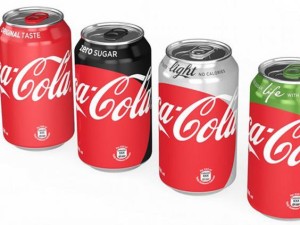 These two strategies are taking two of Coca-Cola’s most recognizable brand elements – the name and the red disk – and using them as “boosters” for its complementary branding. For many brand portfolios, this strategy is a far-off dream, only available if and when their main brand achieves a level of notoriety and positive brand connotation where it can be enabled to carry over into the space of additional brands.
These two strategies are taking two of Coca-Cola’s most recognizable brand elements – the name and the red disk – and using them as “boosters” for its complementary branding. For many brand portfolios, this strategy is a far-off dream, only available if and when their main brand achieves a level of notoriety and positive brand connotation where it can be enabled to carry over into the space of additional brands.
So how can those without a global icon at the helm of the brand ship take advantage of whatever boost may come from its main brand? The answer may not be all that different from Coca-Cola’s strategy.
As mentioned before, the company is using Coke as the starting point for its complementary brand descriptions. While this obviously has a positive effect on the secondary brands, it also raises the profile and positivity of Coke itself. If a consumer, who may be on the fence about a product, sees that a company is using a direct comparison between brands to highlight quality, then it is safe to assume that the primary brand represents excellence.
So if your primary brand isn’t quite at Coca-Cola levels, this comparison to other brands, especially of those find great success, can raise its standing in the consumer mindset as well. The benefits really do go both ways.
Image Sources:
Image 1
Image 2
Learn more about building your best brand portfolio strategy by downloading this FREE webinar, "Identifying The Opportunities In Your Brand Portfolio - Are You Capitalizing On Every Potential Business Opportunity Your Portfolio Provides?"



